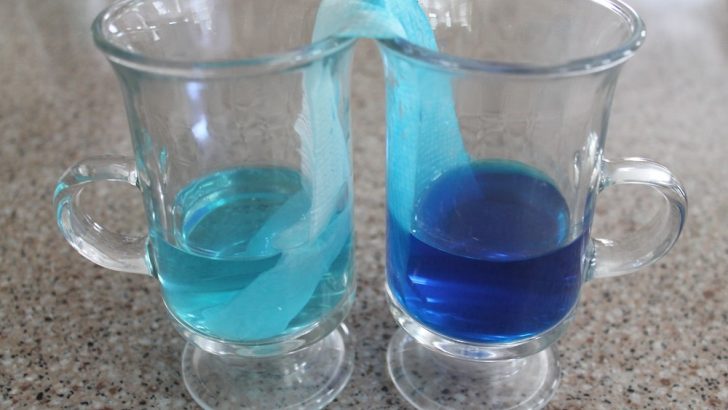Children’s Corner
Water can certainly move in mysterious ways. It is paramount to life on earth and humans would certainly not be able to survive without it considering about 60% of our bodies are made up of the liquid! There are hundreds of experiments examining the miracle that is water and how it interacts with our bodies but also the world and how it has formed the planet over millions of years.
Why not conduct your own experiment to examine one of the interesting characteristics of water? The aim will be to get water from one cup to make its way upwards and back down into a second empty cup with the help of kitchen roll and an interesting scientific process.
Apparatus:
A glass of water
An empty glass
Some kitchen roll
Food colouring
Method:
Twist a couple of pieces of kitchen roll together until it forms something that looks a little like a piece of rope, this will be the ‘wick’ that will absorb and transfer the water (a bit like the wick on a candle transferring the wax to the flame).
Put your food colouring into the glass with water in it and mix.
Place one end of the kitchen roll into the glass filled with water and the other into the empty glass.
Watch what happens (this experiment takes a little bit of patience).
Your kitchen roll rope (or wick) starts getting wet, after a few minutes you will notice that the empty glass is starting to fill with water, it keeps filling until there is an even amount of water in each glass, how does this happen? This action will be easier to see as the food colouring will make the path of the water obvious.
This process is called ‘capillary action’, the water uses this process to move along the tiny gaps in the fibre of the kitchen roll. It occurs due to the adhesive force between the water and the kitchen roll being stronger than the cohesive forces inside the water itself. This process can also be seen in plants where moisture travels from the roots to the rest of the plant.
How does capillary action work in the real world? A concrete example can be seen in plants and trees which couldn’t thrive without capillary action. Plants put down roots into the soil which are capable of carrying water from the soil up into the plant. Water, which contains dissolved nutrients, gets inside the roots and starts climbing up the plant tissue. Capillary action helps bring water up into the roots.
Capillary action can be seen everywhere and is a very interesting phenomenon that certainly requires further investigation!


 Chai Brady
Chai Brady
